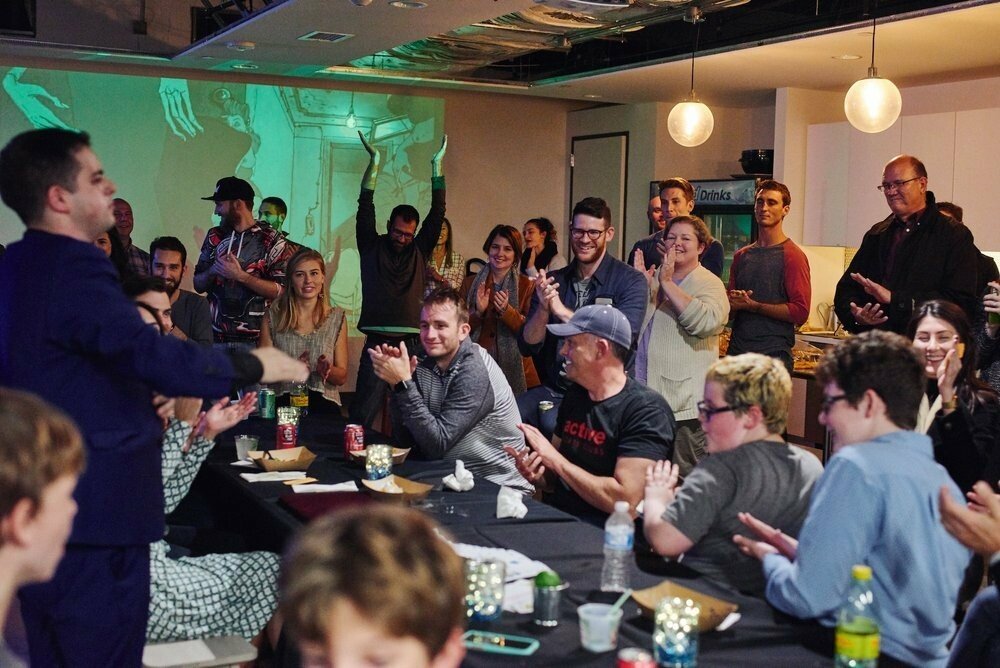How to Incorporate Magic into Educational Workshops
Make your educational workshops unforgettable by adding a touch of magic to captivate and teach.
Imagine walking into a classroom where students are on the edge of their seats, eyes wide with anticipation, as the teacher performs a mesmerizing magic trick. Suddenly, learning has transformed into an exciting adventure. This isn't just a fantasy; it's a reality that can be achieved by incorporating magic into educational workshops.
Magic, with its ability to captivate and engage, can be a powerful teaching tool. In this blog post, we will explore how you can use magic to make educational settings more dynamic and effective. We’ll cover the benefits, principles, types of tricks, steps for integration, examples, challenges, and solutions. By the end, you’ll be ready to add a touch of magic to your educational toolkit.
The Benefits of Using Magic in Education
Magic isn’t just about entertainment; it can have profound educational benefits:
Engagement: Magic grabs students’ attention and keeps them engaged. When students are intrigued, they are more likely to participate actively and retain information.
information Retention: The surprise element of magic tricks makes the learning experience memorable. Studies have shown that when learners are emotionally engaged, they retain information better.
Interactive Learning: Magic encourages participation. Students don’t just watch; they interact, which promotes active learning and deeper understanding.
Principles of Effective Educational Magic
To incorporate magic successfully into educational workshops, consider these principles:
Simplicity: Choose tricks that are easy to perform and understand. The goal is to illustrate a concept, not to confuse.
Relevance: Ensure the magic trick is directly related to the educational content. The trick should enhance understanding, not distract from it.
Clarity: Clearly explain the trick and the concept it demonstrates. Make sure the educational message is not lost in the performance.
Types of Magic Tricks Suitable for Education
Different types of magic tricks can be used to teach various subjects:
Visual Tricks: Use visual illusions to explain concepts like perception, color theory, or optical illusions. For example, a trick that changes the color of an object can illustrate how our eyes perceive color.
Mathematical Tricks: Math-based tricks, such as number prediction or probability, can make abstract concepts tangible. A classic example is the “21 Card Trick,” which can be used to teach sorting algorithms and probability.
Science-Based Tricks: Tricks that involve scientific principles can make learning about physics or chemistry fun. For instance, using a “Magic Milk” experiment to show chemical reactions can spark interest in science.
Steps to Incorporate Magic into Your Workshop
Here are detailed steps to seamlessly integrate magic into your educational workshops:
Identify Learning Objectives: Determine what concepts you want to teach. For example, if you’re teaching physics, you might focus on principles like gravity or magnetism.
Select Appropriate Tricks: Choose magic tricks that align with your learning objectives. For teaching gravity, a levitation trick would be perfect.
Practice and Master: Practice the trick until you can perform it smoothly. Confidence in execution is key to maintaining the illusion and engaging your audience.
Create a Lesson Plan: Integrate the magic trick into your lesson plan. Ensure the trick complements your teaching and doesn’t feel like an add-on.
Engage and Involve Students: Encourage student participation. Ask them to assist with the trick or predict the outcome.
Explain the Tricks: After performing the trick, explain the underlying principles. Connect the magic to the lesson to reinforce the educational content.
Encourage Exploration: Provide students with materials or resources to explore the trick further. This could be in the form of homework or a follow-up activity.
Examples of Magic in Educational Workshops
To give you a better idea, here are examples of how magic can be used in different educational workshops:
Mathematics Workshop: Use card tricks to explain probability and statistics. For instance, perform a trick where you predict a card drawn from a deck, then explain the mathematical principles behind the trick.
Science Workshop: Demonstrate chemical reactions with simple magic tricks. The “Disappearing Water” trick can be used to explain absorption and evaporation.
History Workshop: Use storytelling magic to bring historical events to life. A trick involving “time travel” can make history lessons more engaging and relatable.
Potential Challenges and Solutions
Incorporating magic into educational settings isn’t without challenges. Here are some potential issues and how to address them:
Complexity: Some tricks might be too complex for students to understand.
Solution: Choose simpler tricks and focus on the educational message. Break down the trick into easy-to-understand steps.
Distraction: Students might get too focused on the trick and miss the educational point.
Solution: Ensure that you clearly connect the trick to the lesson. Explain the principles behind the trick immediately after performing it.
Preparation Time: Preparing and practicing magic tricks can be time-consuming.
Solution: Start with a few basic tricks and gradually incorporate more as you become comfortable. Use tricks that require minimal setup and materials.
Building Your Magic Persona
To make your magic performances more engaging, consider developing a unique magic persona. Here are a few tips:
Character Development: Think about what kind of magician you want to be. Are you mysterious, humorous, or dramatic? Your persona can enhance your performance and make it more memorable.
Costume and Props: Simple costume elements and props can add to the magic. Consider wearing a hat, cape, or other accessories that fit your persona.
Creating a Magical Atmosphere
Setting the right atmosphere can greatly enhance the effectiveness of your magic tricks. Here’s how to create a magical environment in your educational workshop:
Lighting: Use lighting to focus attention and create mood. Dim the lights for a dramatic trick or use a spotlight to highlight your hands during a sleight of hand.
Sound Effects: Incorporate sound effects to add excitement and emphasis. A drum roll before the reveal or a magical chime can enhance the experience.
Stage Setup: Arrange the classroom or workshop space to minimize distractions. Use a table with a cloth to conceal props and keep the focus on the performance area.
Tips for Enhancing Student Participation
Active participation makes magic tricks more engaging and educational. Here are some strategies to involve students:
Volunteers: Invite students to assist with the tricks. This not only engages them but also makes the experience more interactive.
Predictions and Hypotheses: Ask students to predict the outcome of a trick or explain how they think it works. This encourages critical thinking and application of concepts.
Group Activities: After demonstrating a trick, divide students into groups and provide materials for them to perform the trick themselves. This hands-on approach reinforces learning.
Using Magic to Teach Soft Skills
Magic can also be a valuable tool for teaching soft skills such as confidence, communication, and teamwork. Here’s how:
Confidence Building: Performing magic tricks can boost students’ confidence as they successfully execute and explain the tricks.
Communication Skills: Magic requires clear communication and storytelling. Encourage students to narrate their tricks and explain the principles behind them.
Teamwork: Group magic activities promote collaboration and teamwork as students work together to perform and understand the tricks.
Evaluating the Effectiveness of Magic in Education
To ensure that your use of magic in educational workshops is effective, consider the following evaluation methods:
Student Feedback: Gather feedback from students about their experience. Ask what they enjoyed and what they learned from the magic tricks.
Assessment of Understanding: Test students’ understanding of the concepts taught through magic. This could be through quizzes, discussions, or practical demonstrations.
Observation: Observe students’ engagement and participation during the workshop. High levels of interest and interaction are indicators of success.
Tips for Virtual Workshops
In today’s digital age, many workshops are conducted online. Here’s how to adapt magic tricks for virtual platforms:
Adapting Tricks for Online Platforms: Choose tricks that work well on camera. Close-up tricks that focus on your hands or small objects are ideal for virtual workshops.
Engaging Remote Students: Use interactive features like polls or chat to involve your audience. Encourage them to try simple tricks themselves using household items.
Incorporating magic into educational workshops can create a dynamic and engaging learning environment. With careful selection and practice of appropriate tricks, educators can make their lessons more interactive and memorable, leaving a lasting impression on their students. So go ahead, add a little magic to your teaching, and watch the wonder unfold.
Ready to add a touch of magic to your next educational workshop? Hire a magician to provide a live demonstration and make your event truly unforgettable. Visit Toronto Magic Company to learn more and book a magician today.



